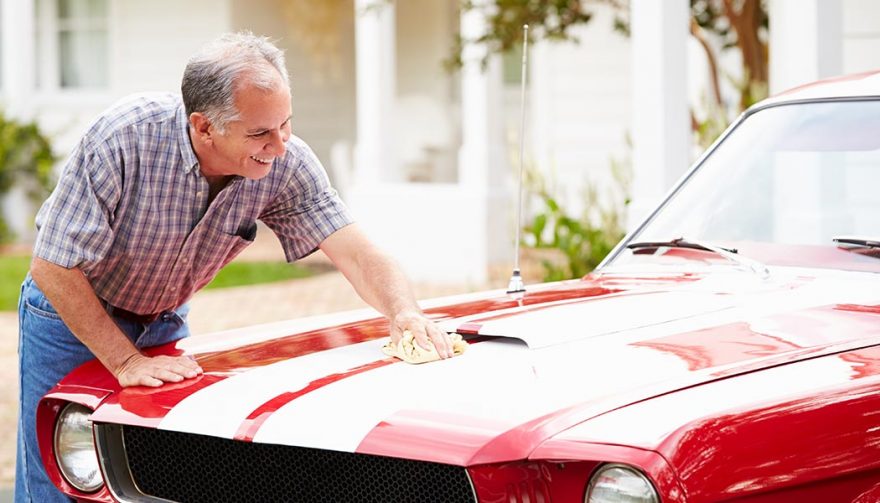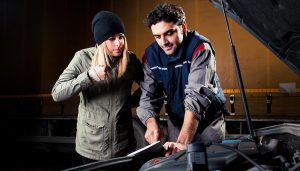
Too many restomods turn out just plain hideous, either aesthetically or mechanically. Some are real gems.
The Pros and Cons of a Restomod
If you haven’t heard of a restomod before, you probably don’t have an opinion on it one way or another. Most automotive enthusiasts know at least a little about it, and they have at least a fairly strong opinion about it.
Restomod is actually a pretty controversial topic, especially if you ask the right people who’re deeply passionate about old vehicles. If you don’t know anyone like that, just try bringing it up at a gathering of classic car owners and you’ll quickly see that a discussion on the merits or lack thereof for restomods can quickly and quite literally escalate into violence, at least of the verbal kind.
Like a lot of terms we use, such as “torque curve” and “approach angle” plenty of people think they know what a restomod is, when in fact they actually don’t really have any idea. And like a lot of terms, different people use them in different ways, only adding to the confusion. Before we dive into the pros and cons, let’s all get on the same page about what the term “restomod” means.
Defining a Restomod
When you give a car a restomod, you’re not just fixing it up. When you take an old car that’s in less-than-perfect shape and you make it look like it did when it was sitting in a dealer’s showroom way back when it was brand new, that’s called restoring it. People who restore vehicles go to great lengths to get everything just so, right down to the type and color of the carpeting. That’s not at all what we’re talking about.
With a restomod, you’re not being true to the original vehicle; how untrue to the original vehicle a person decides to be really depends on the person. Some people change how the machine looks, while others preserve the original look of the car but make serious changes to the mechanical systems.
A great example of someone doing both would be Ken Block’s Hoonicorn. The thing’s based on a 1965 Ford Mustang, but it doesn’t look much like one and certainly doesn’t drive like the original. After all, the car has an all-wheel-drive system, a Roush Yates Ford V-8 under the hood and a custom-designed widebody kit. Is this a thing of sacrilege, an affront to the legacy of the Mustang, or is it a completely awesome creation from one of the greatest auto mad scientists? Your answer depends on your own perspective.
The Pros
Faster Cars
We look at the past through rose-colored glasses. A 1974 Porsche 911 felt fast back in the day, because at the time it was. The sad truth is a fair number of — not overly impressive — modern cars could very well outrun this classic, and some people think that just isn’t right.
The solution is to do a restomod instead of just restoring the Porsche. You can choose to drop in a more modern engine, upgrade the existing one, or even use a modern forced induction setup. That way, a Honda Accord isn’t going to spank it at a red light.
Drivers also get to feel that kind of thrill they experienced back when the car was brand new and fast, relative to other vehicles of the time. It’s a way to bring back the magic once more, or at least some people think it is. Going back to the original example, Ken Block’s Hoonicorn is a crazy vehicle that breathes new life into the ’65 Mustang, allowing the car to do things it never would have come close to before.
Making the Car Yours
Just because you think an old American muscle car looks cool doesn’t mean you want to deal with sloppy handling all the time. By doing a restomod, you can create the kind of driving experience you like. For example, not everyone wants the same suspension adjustments. It gives you the chance to create the exact kind of car you’ll love.
The Cons
Messing with the Classics
What would people think if you pulled out a can of spray paint and “improved” the Mona Lisa? Besides getting arrested and being in a lot of legal trouble, the art world would be in an uproar, and rightfully so. But so many people are doing a similar thing when they take a classic car and slap on some awful mods.
For example, the 1955 Ford Thunderbird is a breathtakingly beautiful car, a work of art on wheels, if you will. Imagine if someone thought they could improve on that design through a restomod, lifting the car a few inches, slapping on bigger wheels, adding flared-out black plastic fenders, an aluminum rear wing, etc. The car would be ruined, a hideous shadow of its former perfection.
Too many restomods turn out just plain hideous, either aesthetically or mechanically. The cars were created by teams of engineers and designers who had years of training and experience, so restoring the work they had carefully planned is a good way to go. Plenty of people think they know better, and then fail miserably.
Erasing History
Classic cars form a bridge to the past. They’re a part of history, showing the ‘kids these days’ how things were long before they were born. When people go to car shows or even just see a classic vehicle out and about, it acts as a type of educational activity that’s as much fun as it is informative.
Doing a restomod on a classic car erases part or all of the historical qualities. It’s pretty much like burning history books.
Vehicle Worth
Restoring a classic car is a painstaking and tedious process. While it’s not for everyone, those who do take it on can reap big rewards, especially financially. A well-done restored vehicle can be worth a considerable amount of money, depending of course on the model.
The fact is that restomods usually are catered to the tastes and preferences of the owner. Like any modified vehicle, buyers can look at the customizations as a big hit against getting the car. If they don’t like them for whatever set of reasons, they’ll have to take on the cost and effort and removing them and restoring those components.
Which side do you take when it comes to restomods: pro or con?





